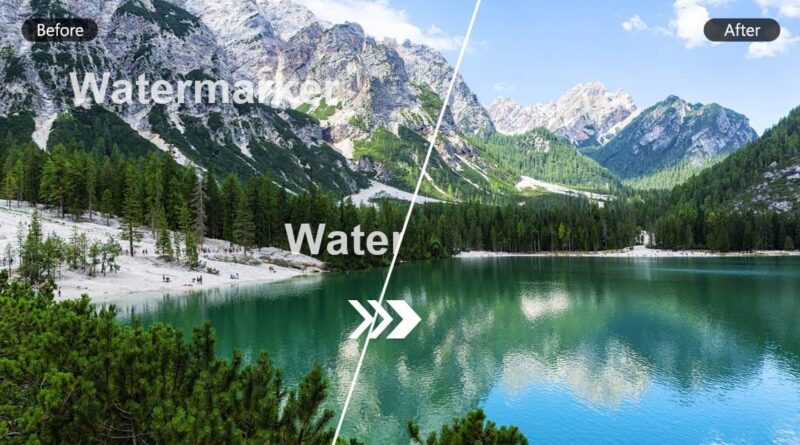Who Can Benefit from an AI-Based Watermark Removal?
Who Can Benefit from an AI-Based Watermark Removal?
In the digital age, where content sharing and dissemination have become more accessible than ever, protecting intellectual property has become a paramount concern for content creators, photographers, artists, and various businesses. Watermarking has emerged as a popular method to assert ownership and prevent unauthorized use of digital content. However, there are situations where the need to remove watermarks arises, and this is where AI-based watermark remover technology comes into play. This article explores the beneficiaries of AI-based watermark removal and its implications for various stakeholders.
Understanding Watermarks and Their Purpose
Watermarks are transparent, semi-opaque, or translucent logos, text, or patterns that are superimposed onto digital images or documents. They serve as a visual indication of ownership or origin, often deterring unauthorized use, distribution, or reproduction of content. Watermarks can be found on various types of content, including photographs, artworks, stock images, and documents.
However, there are legitimate scenarios where watermark removal might be necessary. Content creators and businesses might wish to share high-quality samples of their work with potential clients, making it essential to present the content without distractions. Moreover, in the context of academic research, publishers might need to remove watermarks from documents for clarity, without compromising the originality and integrity of the work.
The Role of AI-Based Watermark Removal
AI-based watermark removal technology employs advanced machine learning algorithms, particularly deep learning models, to automatically analyze and modify digital content. This technology has the potential to accurately detect watermarks and restore the underlying image to its original state, minimizing the visual impact of watermark artifacts. The development and application of this technology have sparked discussions about its ethical implications and potential misuse.
Beneficiaries of AI-Based Watermark Removal
1. Content Creators and Businesses
Content creators, such as photographers, artists, and designers, invest considerable effort in producing high-quality content. They often use watermarks to protect their work from unauthorized use. However, when showcasing their portfolios or engaging with potential clients, these creators may want to share unobstructed, watermark-free versions of their work. AI-based watermark removal allows them to present their content in its full glory while still retaining the original files with watermarks for secure transactions.
2. Marketing and Advertising Agencies
Marketing and advertising agencies frequently work with stock images and licensed content for various campaigns. In some cases, these agencies might require images without watermarks for mock-ups or client presentations. AI-based watermark removal can assist them in creating compelling visuals without the distractions of watermarked content, enhancing the overall quality of their proposals and marketing materials.
3. Educational and Research Institutions
Academic publishers and research institutions often share documents and images in scholarly contexts. Sometimes, watermarks on documents can obstruct the clarity of text and visuals. AI-based watermark removal can help researchers and educators produce clearer materials for presentations, publications, and educational resources while ensuring that the content’s integrity remains intact.
4. Archivists and Curators
Cultural institutions, museums, and archives may have historical photographs or artworks with watermarks that need to be removed for restoration purposes or for creating reproductions. AI-based watermark removal can aid in restoring these artifacts to their original appearance, facilitating better preservation and exhibition experiences.
5. Image Editing Professionals
Image editors and retouching experts often encounter challenging scenarios where watermark removal is required to enhance or restore images. AI-powered tools can expedite their workflow, providing them with efficient options for watermark removal while maintaining the image’s quality.
Ethical Considerations
While AI-based watermark removal technology offers various benefits, its use also raises ethical concerns. Unauthorized use of watermarked content and potential copyright infringement can be exacerbated by such tools. It’s crucial for users of this technology to ensure that they have the legal right to remove watermarks from content and that they are abiding by intellectual property laws and copyright regulations.
Conclusion
AI-based watermark removal technology has emerged as a powerful tool that can cater to the needs of content creators, businesses, researchers, and various professionals requiring watermark-free images. While its applications are numerous and diverse, ethical considerations remain paramount. As the technology continues to evolve, stakeholders must strike a balance between the advantages it provides and the legal and ethical responsibilities associated with content ownership and usage.
